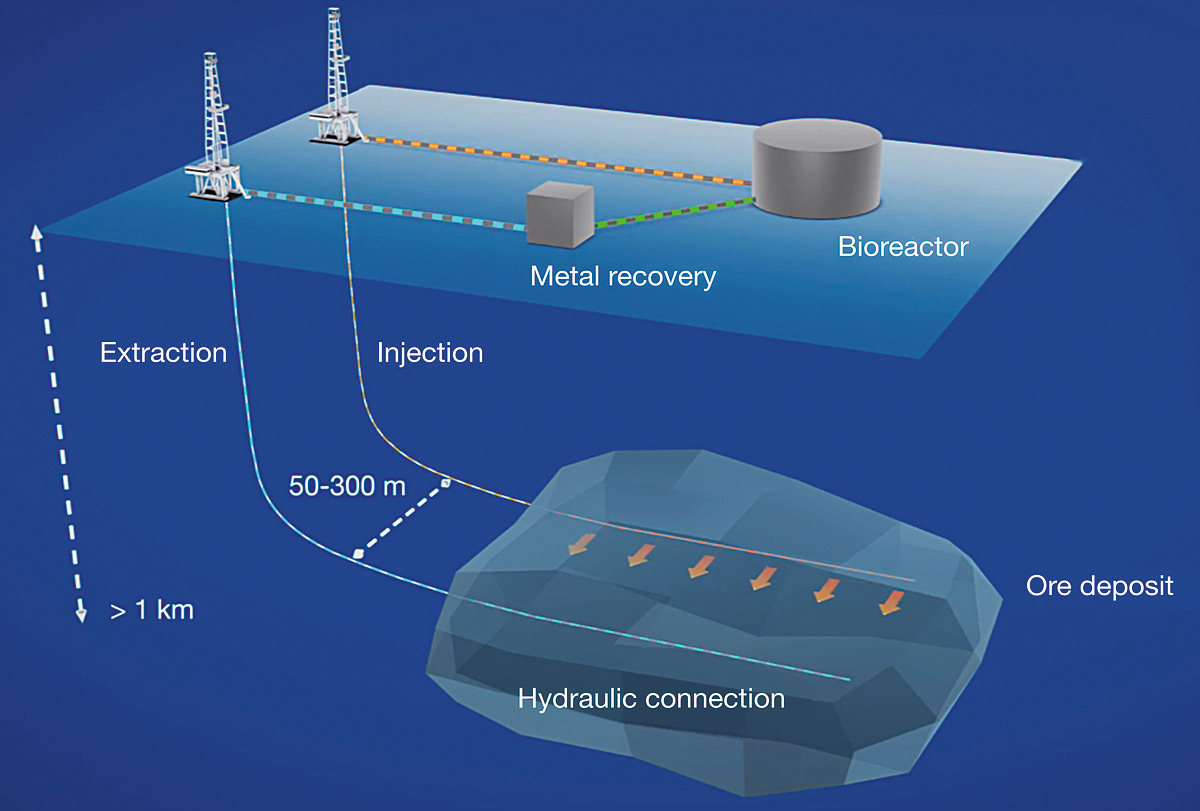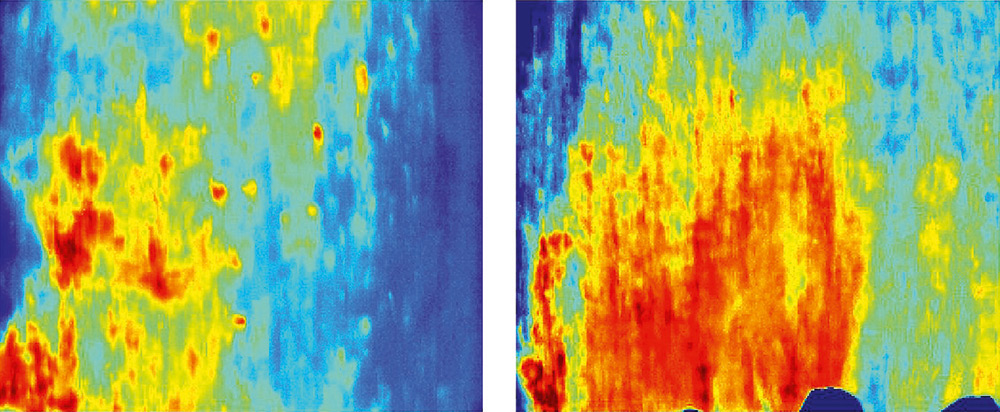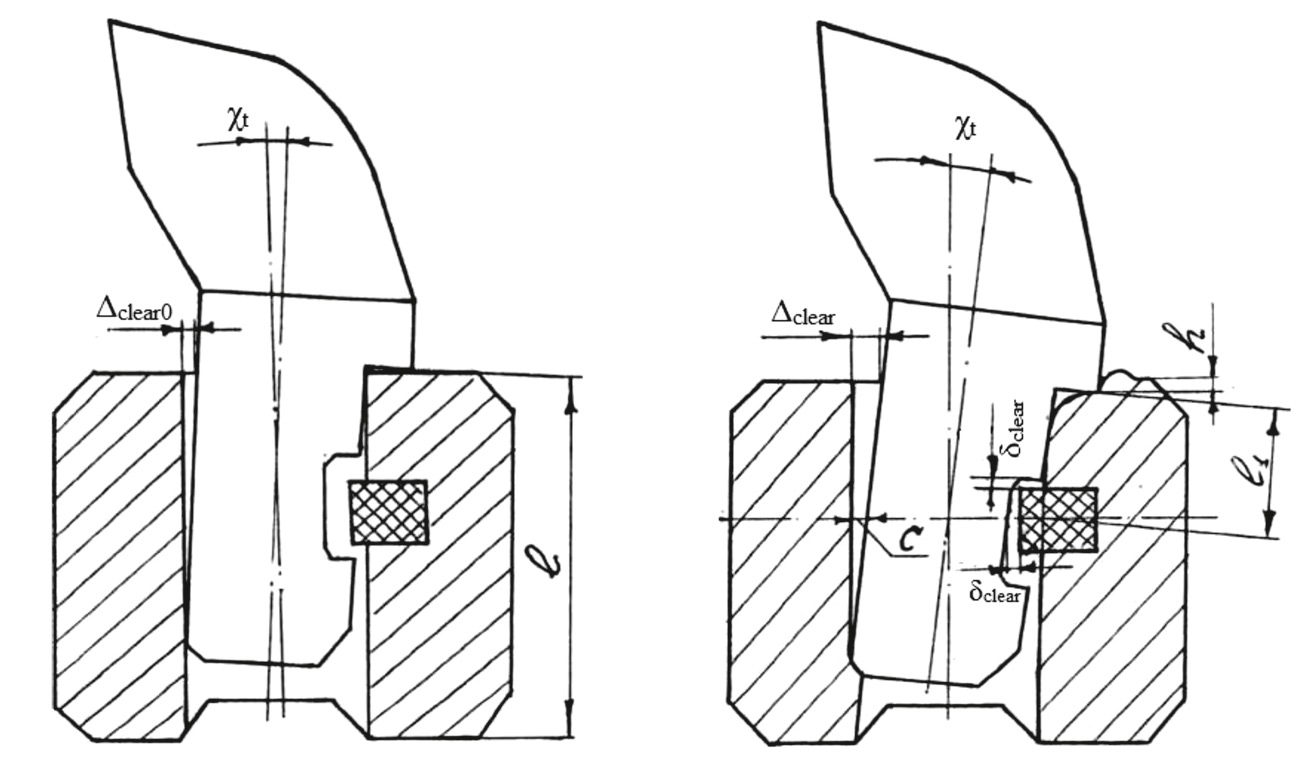The member states of the European Union, and Germany is no exception here, are highly dependent on imports of raw materials. The partnership agreements that the German Federal Republic has concluded in recent years with potential supplier countries in the raw-materials sector demonstrate this all too clearly. When deciding which supplier countries to choose one of the key factors is sustainability, namely the social and environmental impact and the economic viability of the mineral extraction process. In this connection alternative methods of energy and raw-materials production have been gaining increasing importance alongside the normal techniques that have been traditionally part of the mining industry.
While during the second half of the last century the industry’s focus was on the mechanisation and then on the automation of individual workplaces and production units below ground, today the talk is much more about introducing automatic technology mine-wide. This requires a series of innovative approaches at all levels. The present edition of Mining Report Glückauf …
Read moreWith my best regards // Mit freundlichem Glückauf
Dipl.-Ing. Andreas-Peter Sitte
Chief Editor Mining Report Glückauf, Essen
Fully Automated Underground Mine
Since its mechanisation – mainly 1950s to 1970s – and first approaches for automation of single processes – since late 1980s – the mining industry is now developing solutions for complete automation systems for independent mine sections or, ideally, entire mines. Applications will be found first in countries of intensive mining activities, such as the USA and Australia, as well as in countries of highly demanding mine climates, such as South Africa with its deep gold mines. Generally, with no people in the mines, automation can lead to a significant decrease in accident numbers. Heat and gas levels (NOx and CO) will be no major concerns. Ventilation has to remove the heat from machinery and to support it with oxygen if it is a combustion engine. These goals could be achieved within the next ten to 15 years. However, this will require systems that are highly integrated …Author: Prof. Dr.-Ing. Oliver Langefeld, Institut für Bergbau, Technische Universität (TU) Clausthal, Clausthal-Zellerfeld/Germany
Read moreThe BIOMOre Project – A New Mining Concept for Extracting Metals from Deep Ore Deposits Using Biotechnology

Fig. 2. Surface and sub-surface concept of an in situ bioleaching plant for the exploitation of a deep-buried deposit. // Bild 2. Über- und Untertagekonzept einer In-situ-Biolaugungsanlage für den Abbau einer tiefen unterirdischen Lagerstätte. Source/Quelle: DMT
BIOMOre is an EU funded project within the Horizon 2020 funding scheme that addresses the topic “Mining of small and complex deposits and alternative mining”. This three year project, started in February 2015, comprises 23 partners located in nine different countries with five universities being included. Germany, Poland, Austria, United Kingdom, Finland, France, Sweden, Spain and South Africa are involved.
The EU is highly dependent on the import of mineral and metallic raw materials and therefore supports developments that strengthen European mining of these commodities. The aim of the BIOMOre project is to develop a novel base metal mining technology that has lower environmental and social impacts and operates at a lower cost than conventional mining techniques.
BIOMOre’s key concept is the coupled use of in situ leaching and bioleaching technologies applied to deep deposits.
Authors: Prof. Dr. Lev Filippov and Eng. Caroline Izart, University of Lorraine, Nancy/France, Prof. Dr. Horst Hejny, MinPol GmbH, Dreistetten/Austria, Knut Ansgar Hirsch, DMT GmbH & Co. KG, Essen/Germany, Prof. Dr. Barrie Johnson, Bangor University, Bangor/Great Britain, Dr. René Kahnt, G. E. O. S. Ingenieurgesellschaft mbH, Freiberg/Germany, Dr. Horst Märten, Umwelt- und Ingenieurtechnik GmbH, Dresden/Germany, and Heathgate Resources Pty Ltd, Adelaide/Australia, Wickus Slabbert, Hatch LTD, Mississauga/Canada
Read moreSelective Excavation of Spoil Dumps Using Heavy Machinery: Study Based on a Chilean Tailings Impoundment
Mine tailings are often disposed of in slurry dumps. Older facilities of this kind may include relating dams that have been poorly designed and constructed. This can pose a threat to local residents and the environment. Progressive oxidation can result in the dissolution of metals. This may impose an increased pollution burden on the aquifers. The stability and design of these structures is also very important. Impoundments of this kind, depending on the particle size distribution of the stored material and the degree of moisture penetration …Authors: Dipl.-Ing. Tobias Krichler, Prof. Dr.-Ing. Holger Lieberwirth, Dipl.-Geoök. Maria Ussath, Dr.-Ing. Nils Hoth, TU Bergakademie Freiberg, Freiberg
Read moreA First Step Towards Landfill Mining
The term “urban mining”, which is now a well-known concept, refers to the reclamation of compounds and elements from man-made sources. When buildings are being demolished, e. g., any valuable materials encountered, such as copper pipes and cables or old lead piping, can be extracted separately and the metals reused. Concrete rubble can also be recycled to produce new aggregate and scrap brick material can be turned into plant substrate.
A sub-type of urban mining is “landfill mining”. Household waste dumps have been widely used over the years and sites of this kind are to be found in practically every major residential area. In Germany alone there are an estimated 106,000 abandoned installations of this kind as well as 372 old landfill sites (based on figures obtained for 1988). Until the year 2005 the latter were in some cases also allowed to be used for the storage of organic waste.
However, before old landfill sites and waste tips of this kind can be opened up again with a view to extracting the valuable materials they contain it will be necessary to …
Authors: Prof. Dr. rer. nat. Frank Otto, Geotechnik und Angewandte Geologie, Technische Hochschule Georg Agricola (THGA), Bochum, Dipl.-Chem. Jürgen Kanitz, GGT GbR, Bochum
Read moreAcoustic Emission Technology and Thermal Imaging for Material Flow Characterization in Mining

Fig. 1. TI image of a to dry material flow (left) und TI image of a to wet material flow (right). // Bild 1. IR-Bild eines zu trockenen Stoffstrom (links) und IR-Bild eines zu feuchten Stoffstroms (rechts). Source/Quelle: RWTH
Authors: Tobias Vraetz, M.Sc., Dr.-Ing. Ralph Baltes, Dipl.-Ing. Nina Fietz, Univ. Prof. Dr.-Ing. Karl Nienhaus, Institute for Advanced Mining Technologies (AMT), Rheinisch-Westfälische Technische Hochschule (RWTH) Aachen
Read moreImpacts and Implications of Hydraulic Fluids for the Total Cost of Ownership (TCO) of Mining Equipment
According to a recent industry survey, only 25 % of mining companies believe that cost savings of more than 10 % can be achieved with the right choice of hydraulic oil. 43 % of the surveyed companies even question if the use of high-quality lubricating oil can lead to cost savings at all. At the same time, 95 % of mining companies claim to have experienced unscheduled machine shutdowns in the last three years, and 56 % of these companies have indicated that they are aware that these production stops were due to the wrong choice or poor handling of lubricating oil.Author: Aarti Mona Soerensen, Competence Center for Mining and Mineral Resources of the Canadian German Chamber of Industry and Commerce Inc., Toronto/Canada
Read moreWays of Enhancing Endurance of Fastening for Cutting Bits of Coal Mining Machines

Fig. 5. Passive fastening of cutting bits in a new and worn tool holder. // Bild 5. Passive Befestigung des Schneidstahls in einer neuen und abgenutzten Schneidstahlhalterung.
Authors: Dr.-Ing. Alexej Zich, TU Bergakademie Freiberg, Prof. Dr.-Ing. Yuriy Nikolayevich Linnik und Prof. Dr. oec. Vladimir Yuryevich Linnik, Staatliche Universität für Management, Moskau/Russland
Read moreUnderground “Green” Mining of Dimension Stone – Limestone in Slovenia
n total eleven dimension stone – limestone quarries in Slovenia, underground mining is carried out today in five quarries, Hotavlje I quarry, Lipica I quarry, Lipica II quarry, Doline quarry, and Debela griža quarry. In all five quarries the reason was primarily the geological structure of the site, the quarry’s condition, the potentially large amounts of the overburden in the event of an expansion of the surface part of the quarry, and the increasing needs for this raw material, i. e., natural/dimension stone. The Management of the companies with a transition to underground extraction of dimension stone meets the highest environmental standards, greater competitiveness of their dimension stone on the market, and provides environmentally-friendly mining or so-called green mining. The underground extraction of dimension stone blocks is done using a modified room-and-pillar excavation method …Author: Assist. Prof. Dr. Jože Kortnik, Institut für Geotechnik, Bergbau und Umweltschutz, Universität Ljubljana, Ljubljana/Slowenien
Read moreExport Finance in the Mining Industry
This article deals with export finance for the mining industry. Although the issue has already entered the industry, the hurdles for small to medium-sized enterprises seem to be too large to make a full use of export finance. For this reason, the following article is addressed to exporters who have not yet dealt with the subject in detail. The topic is explained by an example from the mining industry. It highlights the challenges faced by exporters as well and provides a solution approach.Authors: Dr. phil. Manuel Probst, Head of Export Finance, und Janes Bohlen, M.Sc., Manager Export Finance, Ferrostaal Equipment Solutions GmbH, Hamburg
Read more

























